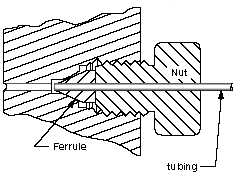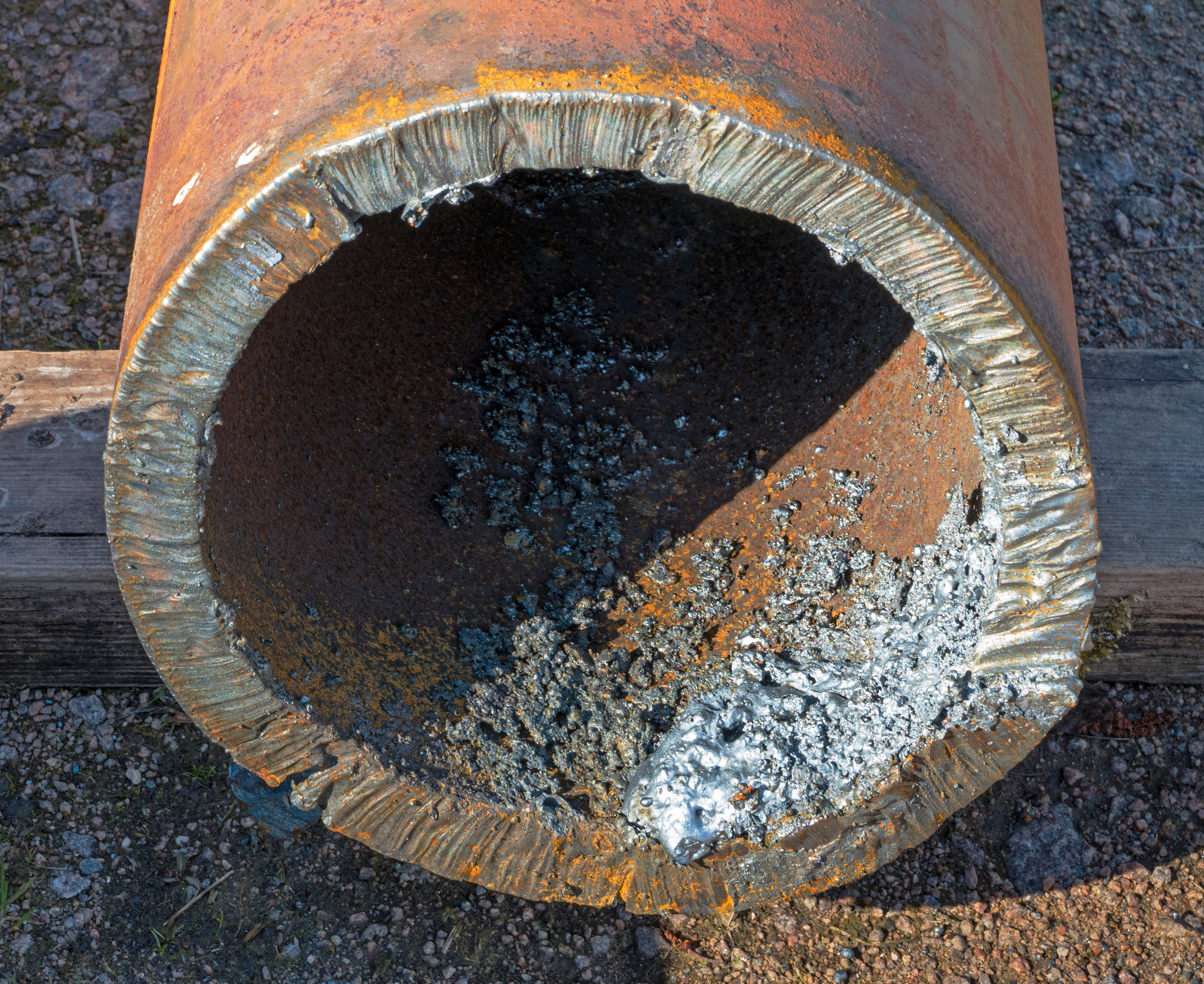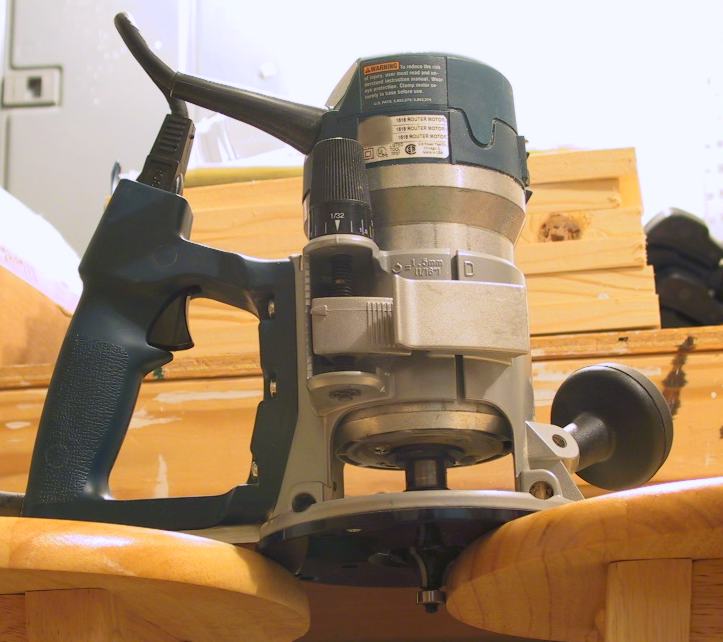|
Profile (engineering)
In standardization, a profile is a subset internal to a specification. Aspects of a complex technical specification may necessarily have more than one interpretation, and there are probably many optional features. These aspects constitute a profile of the standard. Two implementations engineered from the same description may not interoperate due to having a different profile of the standard. Vendors can even ignore features that they view as unimportant, yet prevail in the long run. The use of profiles in these ways can force one interpretation, or create de facto standards from official standards. Engineers can design or procure by using a profile to ensure interoperability. For example, the International Standard Profile, ISP, is used by the ISO in their ISO ISP series of standards; in the context of OSI networking, Britain uses the UK-GOSIP profile and the US uses US- GOSIP; there are also various mobile profiles adopted by the W3C for web standards. In particular, impleme ... [...More Info...] [...Related Items...] OR: [Wikipedia] [Google] [Baidu] |
Standardization
Standardization (American English) or standardisation (British English) is the process of implementing and developing technical standards based on the consensus of different parties that include firms, users, interest groups, standards organizations and governments. Standardization can help maximize compatibility, interoperability, safety, repeatability, efficiency, and quality. It can also facilitate a normalization of formerly custom processes. In social sciences, including economics, the idea of ''standardization'' is close to the solution for a coordination problem, a situation in which all parties can realize mutual gains, but only by making mutually consistent decisions. Divergent national standards impose costs on consumers and can be a form of non-tariff trade barrier. History Early examples Standard weights and measures were developed by the Indus Valley civilization.Iwata, Shigeo (2008), "Weights and Measures in the Indus Valley", ''Encyclopaedia of the History ... [...More Info...] [...Related Items...] OR: [Wikipedia] [Google] [Baidu] |
Cross Section (geometry)
In geometry and science, a cross section is the non-empty intersection (set theory), intersection of a solid body in three-dimensional space with a Plane (geometry), plane, or the analog in higher-dimensional spaces. Cutting an object into slices creates many parallel cross-sections. The boundary of a cross-section in three-dimensional space that is parallel to two of the Cartesian coordinate system, axes, that is, parallel to the plane determined by these axes, is sometimes referred to as a contour line; for example, if a plane cuts through mountains of a raised-relief map parallel to the ground, the result is a contour line in two-dimensional space showing points on the surface of the mountains of equal elevation. In technical drawing a cross-section, being a Planar projection, projection of an object onto a plane that intersects it, is a common tool used to depict the internal arrangement of a 3-dimensional object in two dimensions. It is traditionally crosshatched with th ... [...More Info...] [...Related Items...] OR: [Wikipedia] [Google] [Baidu] |
Rail Profile
The rail profile is the cross-sectional shape of a Railway track#Rail, rail as installed on a railway or railroad, perpendicular to its length. Early rails were made of wood, cast iron or wrought iron. All modern rails are hot rolled steel with a cross section Profile (engineering), (profile) approximate to an I-beam, but asymmetric about a horizontal axis (however see #Grooved rail, grooved rail below). The head is profiled to resist wear and to give a good ride, and the foot profiled to suit the fixing system. Unlike some other uses of iron and steel, railway rails are subject to very high stresses and are made of very high quality steel. It took many decades to improve the quality of the materials, including the change from iron to steel. Minor flaws in the steel that may pose no problems in other applications can lead to broken rails and dangerous derailments when used on railway tracks. By and large, the heavier the rails and the rest of the track work, the heavier an ... [...More Info...] [...Related Items...] OR: [Wikipedia] [Google] [Baidu] |
Metal Profiles
Metal profile sheet systems are used to build cost efficient and reliable envelopes of mostly commercial buildings. They have evolved from the single skin metal cladding often associated with agricultural buildings to multi-layer systems for industrial and leisure application. As with most construction components, the ability of the cladding to satisfy its functional requirements is dependent on its correct specification and installation. Also important is its interaction with other elements of the building envelope and structure. Metal profile sheets are metal structural members that due to the fact they can have different profiles, with different heights and different thickness, engineers and architects can use them for a variety of buildings, from a simple industrial building to a high demand design building. Trapezoidal profiles are large metal structural members, which, thanks to the profiling and thickness, retain their high load bearing capability. They have been develope ... [...More Info...] [...Related Items...] OR: [Wikipedia] [Google] [Baidu] |
Hollow Structural Section
A hollow structural section (HSS) is a type of metal profile with a hollow cross section. The term is used predominantly in the United States, or other countries which follow US construction or engineering terminology. HSS members can be circular, square, or rectangular sections, although other shapes such as elliptical are also available. HSS is only composed of structural steel per code. HSS is sometimes mistakenly referenced as ''hollow structural steel''. Rectangular and square HSS are also commonly called ''tube steel'' or ''box section''. Circular HSS are sometimes mistakenly called '' steel pipe'', although true steel pipe is actually dimensioned and classed differently from HSS. (HSS dimensions are based on exterior dimensions of the profile; pipes are also manufactured to an exterior tolerance, albeit to a different standard.) The corners of HSS are heavily rounded, having a radius which is approximately twice the wall thickness. The wall thickness is uniform aroun ... [...More Info...] [...Related Items...] OR: [Wikipedia] [Google] [Baidu] |
Oxyacetylene
Principle of burn cutting Oxy-fuel welding (commonly called oxyacetylene welding, oxy welding, or gas welding in the United States) and oxy-fuel cutting are processes that use fuel gases (or liquid fuels such as gasoline or petrol, diesel, biodiesel, kerosene, etc) and oxygen to weld or cut metals. French engineers Edmond Fouché and Charles Picard became the first to develop oxygen-acetylene welding in 1903. Pure oxygen, instead of air, is used to increase the flame temperature to allow localized melting of the workpiece material (e.g. steel) in a room environment. A common propane/air flame burns at about , a propane/oxygen flame burns at about , an oxyhydrogen flame burns at and an acetylene/oxygen flame burns at about . During the early 20th century, before the development and availability of coated arc welding electrodes in the late 1920s that were capable of making sound welds in steel, oxy-acetylene welding was the only process capable of making welds of exceptional ... [...More Info...] [...Related Items...] OR: [Wikipedia] [Google] [Baidu] |
Wood Router
The router is a power tool with a flat base and a rotating blade extending past the base. The spindle (tool), spindle may be driven by an electric motor or by a pneumatic motor. It routs (hollows out) an area in hard material, such as wood or plastic. Routers are used most often in woodworking, especially cabinet making, cabinetry. They may be handheld or affixed to Router table (woodworking), router tables. Some woodworkers consider the router one of the most versatile power tools. There is also a traditional hand tool known as a router plane, a form of plane (tool), hand plane with a broad base and a narrow blade projecting well beyond the base plate. CNC wood routers add the advantages of Numerical control, computer numerical control (CNC). The laminate trimmer is a smaller, lighter version of the router. Although it is designed for trimming Lamination, laminates, it can also be used for smaller general routing work. Rotary tools can also be used similarly to routers with t ... [...More Info...] [...Related Items...] OR: [Wikipedia] [Google] [Baidu] |
Profile Cutter
Profile or profiles may refer to: Art, entertainment and media Music * ''Profile'' (Jan Akkerman album), 1973 * ''Profile'' (Githead album), 2005 * ''Profile'' (Pat Donohue album), 2005 * ''Profile'' (Duke Pearson album), 1959 * '' ''Profiles'' (Nick Mason and Rick Fenn album)'', a 1985 album by Nick Mason and Rick Fenn * ''Profiles'' (Gary McFarland album), a 1966 live album by Gary McFarland * ''Profile'' (Misako Odani album), 1997 * ''Profile'' (Wolfe Tones album) Film and television * ''Profile'' (2018 film), a film directed by Timur Bekmambetov * Profile (1954 film), British thriller film * ''Profile'' (1955 TV series) (1955–1957), a Canadian biographical television series * ''Profiles'' (TV series) (1979–1980), a Canadian biographical television series * ''Profile'' (2018 TV series), an American streaming television talk show Other art, entertainment and media * Profile (Marvel Comics), a Marvel Comics character * ''Profile'' (novel), a 2009 novel by Chri ... [...More Info...] [...Related Items...] OR: [Wikipedia] [Google] [Baidu] |
Steel
Steel is an alloy of iron and carbon that demonstrates improved mechanical properties compared to the pure form of iron. Due to steel's high Young's modulus, elastic modulus, Yield (engineering), yield strength, Fracture, fracture strength and low raw material cost, steel is one of the most commonly manufactured materials in the world. Steel is used in structures (as concrete Rebar, reinforcing rods), in Bridge, bridges, infrastructure, Tool, tools, Ship, ships, Train, trains, Car, cars, Bicycle, bicycles, Machine, machines, Home appliance, electrical appliances, furniture, and Weapon, weapons. Iron is always the main element in steel, but other elements are used to produce various grades of steel demonstrating altered material, mechanical, and microstructural properties. Stainless steels, for example, typically contain 18% chromium and exhibit improved corrosion and Redox, oxidation resistance versus its carbon steel counterpart. Under atmospheric pressures, steels generally ... [...More Info...] [...Related Items...] OR: [Wikipedia] [Google] [Baidu] |
Fabrication (metal)
Metal fabrication is the creation of metal structures by cutting, bending and assembling processes. It is a value-added process involving the creation of machines, parts, and structures from various raw materials. Typically, a fabrication shop bids on a job, usually based on engineering drawings, and if awarded the contract, builds the product. Large fab shops employ a multitude of value-added processes, including welding, cutting, forming and machining. As with other manufacturing processes, both human labor and automation are commonly used. A fabricated product may be called a ''fabrication'', and shops specializing in this type of work are called ''fab shops''. The end products of other common types of metalworking, such as machining, metal stamping, forging, and casting, may be similar in shape and function, but those processes are not classified as fabrication. Processes *''Cutting'' is done by sawing, shear (sheet metal), shearing, or Chisel, chiselling (all with hand t ... [...More Info...] [...Related Items...] OR: [Wikipedia] [Google] [Baidu] |
Plan View
In technical drawing and computer graphics, a multiview projection is a technique of illustration by which a standardized series of orthographic projection, orthographic two-dimensional pictures are constructed to represent the form of a three-dimensional object. Up to six pictures of an object are produced (called ''primary views''), with each projection plane parallel to one of the coordinate axes of the object. The views are positioned relative to each other according to either of two schemes: ''first-angle'' or ''third-angle'' projection. In each, the appearances of views may be thought of as being ''projected'' onto planes that form a six-sided box around the object. Although six different sides can be drawn, ''usually'' three views of a drawing give enough information to make a three-dimensional object. These three views are known as front view (also elevation view), top view or plan view and end view (also profile view or section view). When the plane or axis of the ob ... [...More Info...] [...Related Items...] OR: [Wikipedia] [Google] [Baidu] |
Pipeline Transport
A pipeline is a system of Pipe (fluid conveyance), pipes for long-distance transportation of a liquid or gas, typically to a market area for consumption. The latest data from 2014 gives a total of slightly less than of pipeline in 120 countries around the world. The United States had 65%, Russia had 8%, and Canada had 3%, thus 76% of all pipeline were in these three countries. The main attribute to pollution from pipelines is caused by corrosion and leakage. ''Pipeline and Gas Journal''s worldwide survey figures indicate that of pipelines are planned and under construction. Of these, represent projects in the planning and design phase; reflect pipelines in various stages of construction. Liquids and gases are transported in pipelines, and any chemically stable substance can be sent through a pipeline. Pipelines exist for the transport of crude and refined petroleum, fuels—such as oil, natural gas and biofuels—and other fluids including sewage, slurry, water, beer, hot wa ... [...More Info...] [...Related Items...] OR: [Wikipedia] [Google] [Baidu] |







